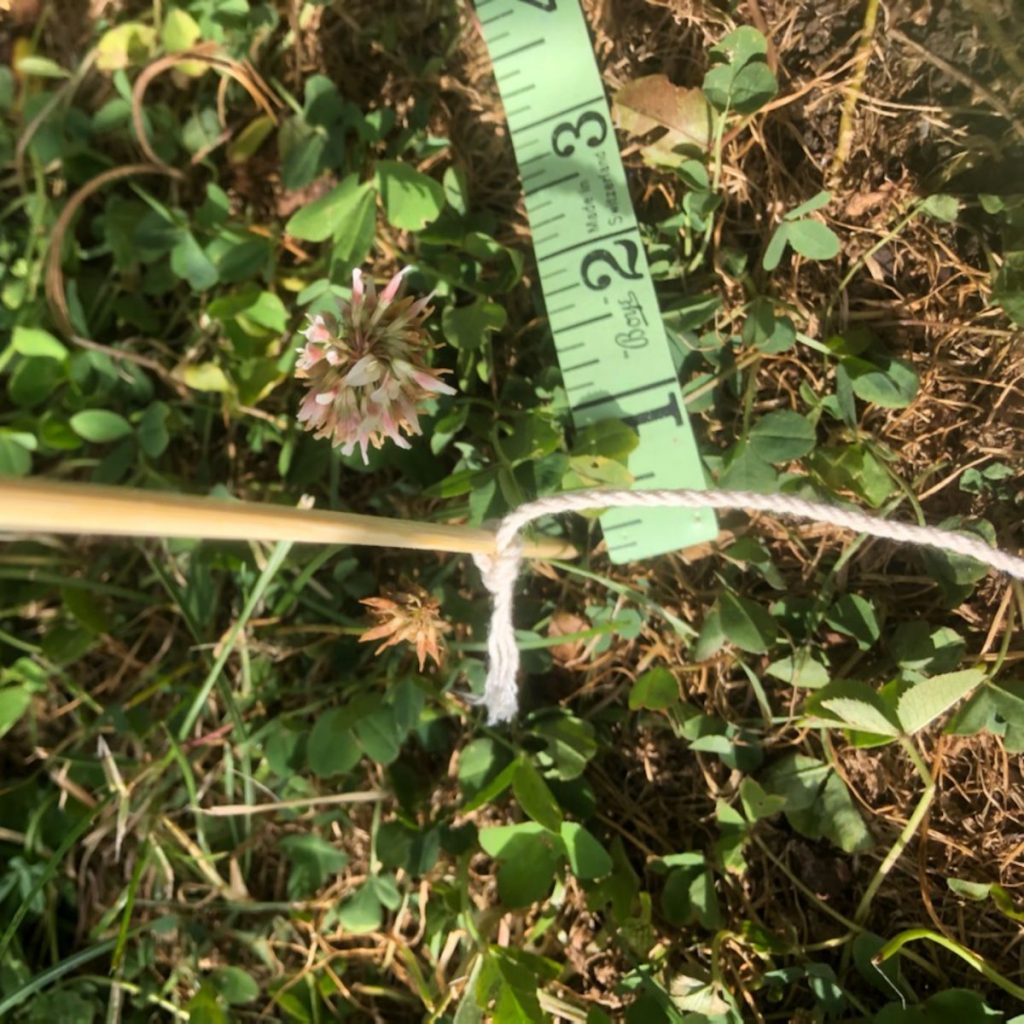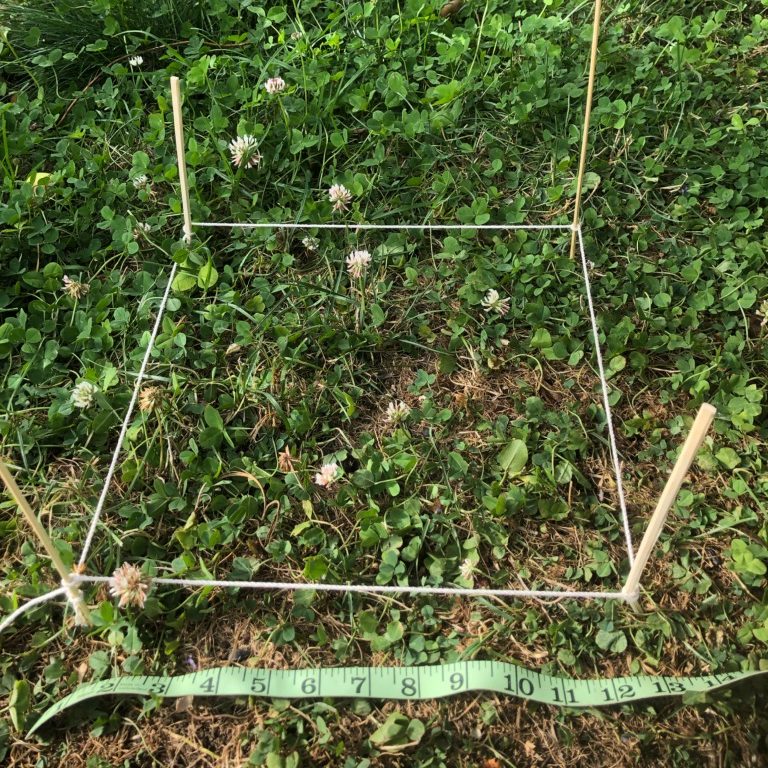
Your child will be amazed at the number of living things they can find in a 12″ x 12″ square of your yard or a public park. Looking closely at a 1-square-foot plot is a common way biologists, ecologists, and others collect data about the natural world. You and your child can create a plot to practice observing and counting in nature. This activity fosters curiosity and strong observational skills that lay the foundation for all future scientific inquiry, and maybe some discoveries!
What we’re learning & skills we’re building
- Measurement – using a ruler or measuring tape to measure out a length of string (or yarn) and the height of the stakes
- Understanding space – seeing what a 12” x 12” space looks like physically
- Observation – looking closely at a plot of nature and seeing, tallying, and comparing what can be seen: animals, plants, sticks, and stones
- Ecology – studying the relationships between animals, insects, and plants to their physical environment
- Color identification – pointing out different colors, and noting how color helps animals camouflage (hide) themselves

Materials
- String or yarn
- Ruler or measuring tape
- Child-safe scissors
- 4 stakes (dowels, chopsticks, bamboo skewers, or safe, sturdy sticks from outside)
- An outdoor spot to study
Optional Materials
- Paper and pencil
- Magnifying glass
- Spoon, trowel, or small shovel for digging

Parent and Child Together
- Measure and cut 60 inches (5 feet) of string. (This will give you an extra foot for tying.)
- Choose 4 sturdy stakes that will form the border of the 12” x 12” observation plot.
- Put one of your four stakes into the ground. Measure 12 inches away from it (on the ground) and place your second stake. Place your third stake 12 inches from the second one, and the fourth 12 inches from the third, so that all four together make a square shape (see picture).
- Create a string (or yarn) border around your square by tying one end of the string to a stake (near the bottom of it), then looping the string around each stake until you come back to the first. Tie off the string on the first stake.
- Let the observations begin! Have your child pay close attention to the 12” x 12” plot of nature. For a young child, a few minutes might be enough; an older child can likely focus longer. Encourage your child to turn over leaves and rocks, and to dig a little in the dirt using a spoon, a trowel, a small shovel, or their hands.
- (Optional) If you have a magnifying glass, encourage your child to look more closely at plants, animals, and insects in the space.
Questions to Ask Your Child
- Do you see anything moving?
- How many plants and animals can you spot? (Scientists will count how many of each animal they see, and an older child can do this by making tally marks on a piece of paper.)
- How many colors do you see? How many different shades of green can you count?
- Are there any clues you see that other animals visit this plot of ground?
- Do you see any animals making their homes underground?
Optional Activity for an Older Child
You can easily turn this activity into an exploration of one cubic foot of nature to introduce an older child to the concept of volume. If you have stakes that are longer than 13 inches, tie the string onto the stakes at 12 inches (from the ground), then loop the string around each stake. This will create a 12” x 12” x 12” cubic foot of nature to observe! Your child can take note of bugs that fly through the space and measure the height of plants inside the “cube” of nature.

